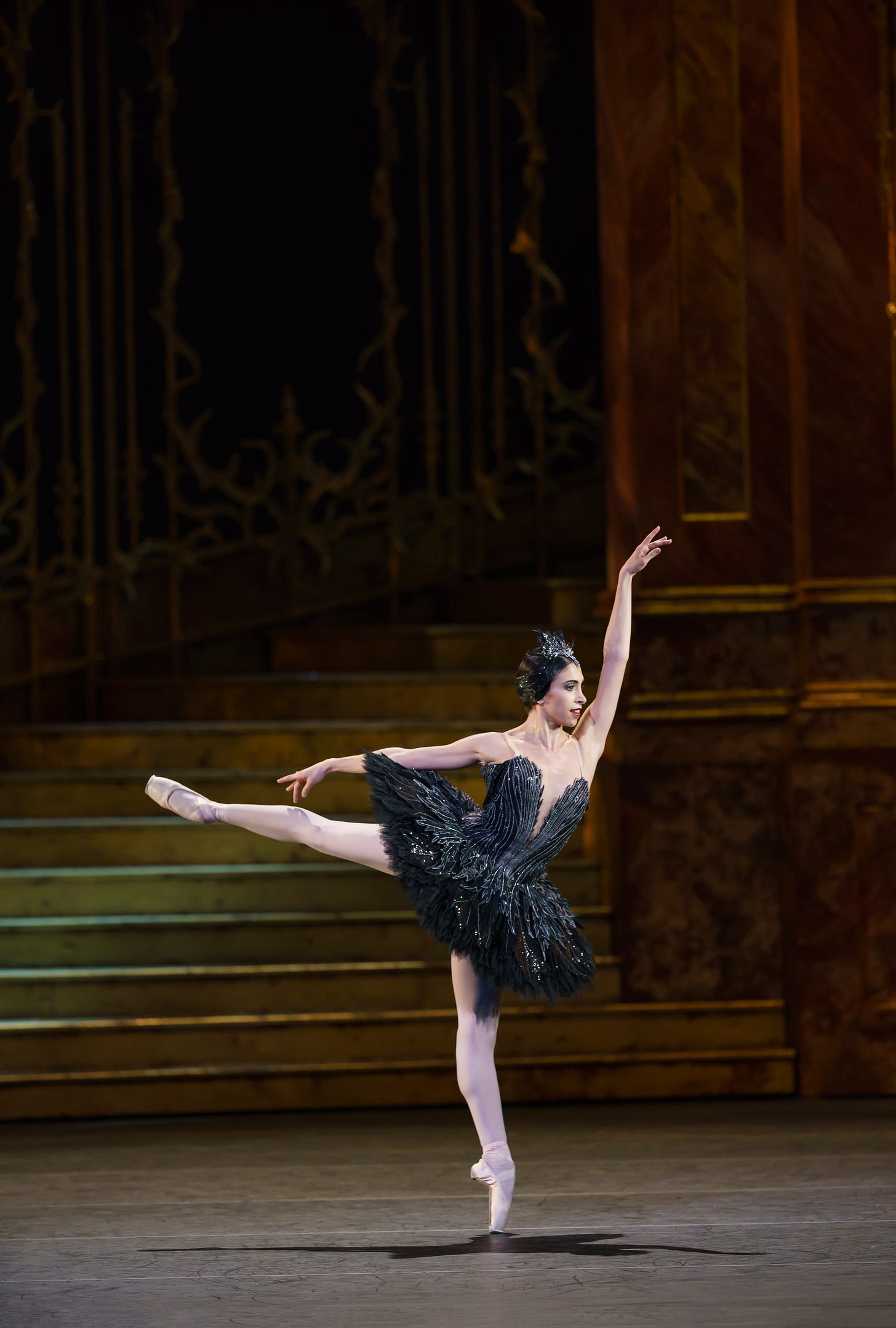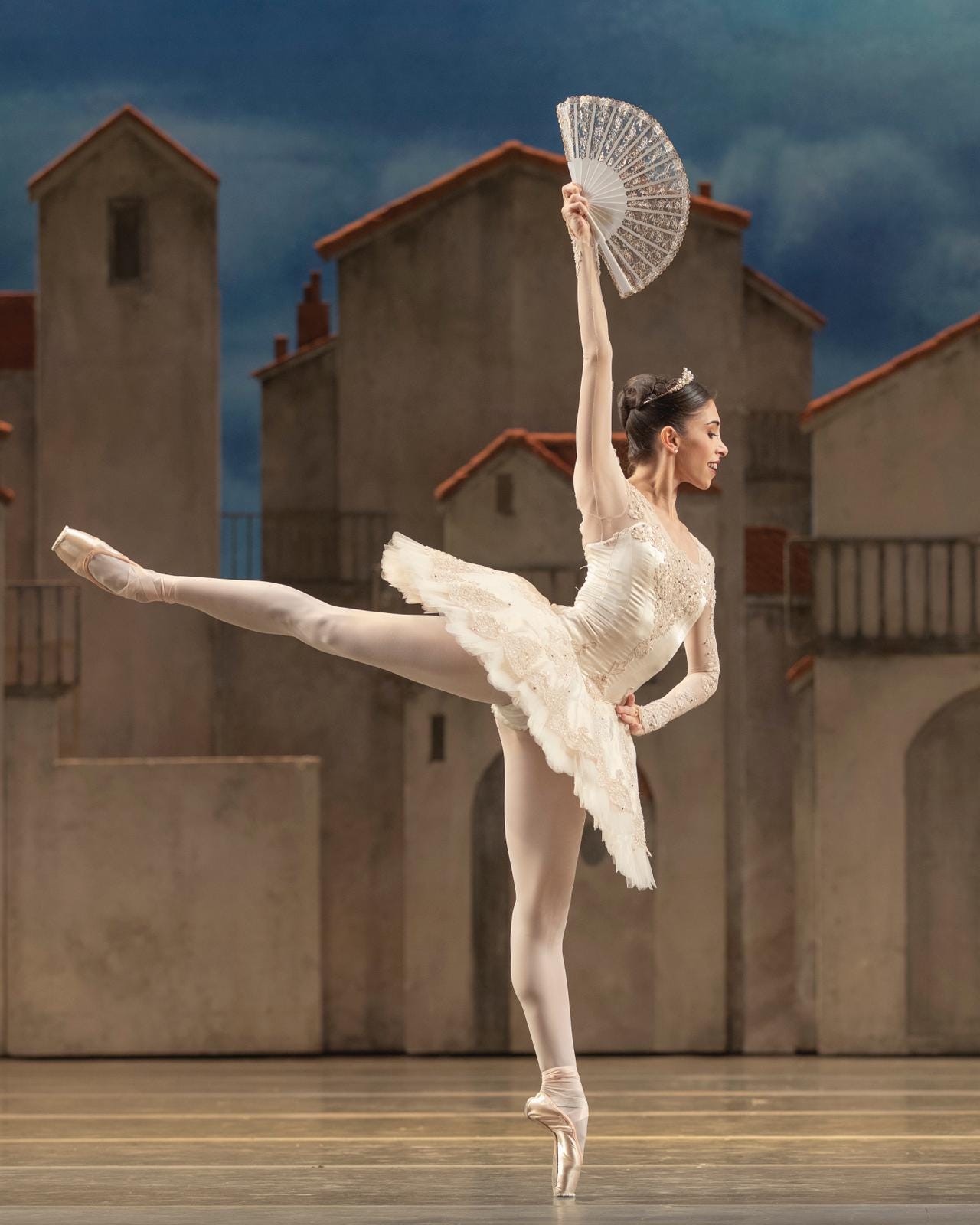Daydreaming Stories x Yasmine Naghdi
Giselle interviews Yasmine Naghdi, Principal at The Royal Ballet
Happy Sunday and welcome to Daydreaming Stories! I’m very excited about today’s story featuring the talented Yasmine Naghdi, a Principal ballerina at The Royal Ballet. Yasmine kindly took the time to answer my questions, and this interview was fascinating as I learned so much thanks to her elaborate answers. I hope you will enjoy reading it as much as I did!
GO: Can you introduce yourself?
YN: My name is Yasmine Naghdi, I am a Principal ballerina of The Royal Ballet, at the Royal Opera House, London. I was born in London; my mother is Belgian, and my father is Persian. I went to The Royal Ballet School from the age of twelve until the age of eighteen. I was offered a contract with The Royal Ballet company, and I joined in 2010 as a member of the corps de ballet. There are five ranks in the company: corps de ballet Artist and First Artist, Soloist, First Soloist, and Principal dancer. I was promoted to the highest rank of Principal ballerina in 2017.
GO: Was your aspiration to become a ballerina from a very young age?
YN: No, I had no clear or obvious aspiration as a young child to become a ballerina. That thought did not occur to me until I was about fourteen or fifteen, and in full-time training at The Royal Ballet School. However, it was noticeable from a very young age that I was hyperactive, and I constantly needed to be on the move; I hated sitting still! I also loved asking people to sit down and watch me dance, that came spontaneously to me. I loved the combination of moving on music and expressing myself through dance.
GO: How did you become a ballerina?
YN: It takes many years of training in a vocational ballet school followed by performing for several years with a ballet company before you can become a ballerina, which is the name giving to a dancer who has reached the highest rank: that of a Principal dancer.
I became a professional dancer at the age of 18. It took me just under six years of full-time training at The Royal Ballet School and a further seven years of performing with The Royal Ballet before I reached the highest rank of Principal dancer.
I started by going to after-school ballet lessons when I was about six years old until I was twelve. I also went to gymnastics classes on Saturday mornings as I was naturally flexible, and I enjoyed the physicality of these gymnastics’ classes.
Aged eleven, I joined the Junior Associates ballet classes, a pre-full time training programme organised by The Royal Ballet School on Saturday mornings. It was during the end-of-year assessment class, in June 2004, that I was spotted by the Head of the Associates’ program. I was promptly invited to attend a ballet class at The Royal Ballet School’s Lower School at White Lodge in Richmond Park where children aged eleven to sixteen are in full-time training. The then-Director of The Royal Ballet School Gailene Stock was present and after watching me in class she offered me a place at the School, starting in September.
At the age of sixteen, students are assessed for their suitability to continue (or not) for a further three years of advanced training at the Upper School in Covent Garden. I was fast tracked through the advanced training: when I finished my first year of advanced training, I was made to skip the second year and joined the third year (the Graduate Year). I finished the three-year training program within one and a half year. I was offered a contract with The Royal Ballet one month before my eighteenth birthday and I joined the company as the youngest corps de ballet member in April 2010.
GO: What is your favourite ballet?
YN: have three favourite ballets: Onegin, Romeo & Juliet, and Manon.
GO: Which is the favourite ballet character/role you have interpreted?
My favourite roles are Tatiana in Onegin, Juliet in Romeo & Juliet and Manon.
These characters are real people, as opposed to imaginary characters like Aurora or Odette/Odile, I can interpret their character on stage. I love becoming these characters and to tell their stories through dance and music.
The music of each one of these ballets is so beautiful and each story moves me deeply. When I dance these roles, I feel I can set my soul and passion totally free, and I get so much in return from dancing those roles.
GO: Which is the most challenging role you performed and why?
YN: Aurora in The Sleeping Beauty and Odette/Odile in Swan Lake. Both are uber-classical roles and are equally challenging but in different ways.
Aurora has the hardest act when she first enters in Act 1, it is energetic, it includes a lot of jumping and turning and then without coming off stage you must perform the famous Rose Adage. Aurora dances with four suitors who try to win her affection to become her husband. Aurora must complete a set of four balances on one leg whilst each suitor holds her hand, and lets go, lets her balance, and then the next suitor comes in to take her hand and she balances again, and this is repeated for all four suitors. This balancing sequence is done at the start and the end of the dance, as well as her dancing on stage throughout this section.
Once this part is over, she re-enters to perform a variation that is long and tests endurance and stamina. After Act 1, there is also Act 2 and 3 to follow with many pas de deux's (dancing with the prince) and more variations. The fact that it is a ballet performed in a pure classical ballet technique whilst wearing a tutu, means that the dancing must be crystalline. It is very demanding on a ballerina’s stamina and endurance whilst making it look effortless and light.
The role of Odette/Odile is challenging in a very different way because you perform two different roles: the White Swan and the Black Swan. It is also a 3-act classical ballet, danced in a tutu and is equally challenging and difficult to perform.
The difference is that in Swan Lake the hardest act is Act 3 when I dance as the Black Swan. You are already fatigued as you have danced in Act 2 as the White Swan which has a lot of slow and controlled movements. For Act 3 you need to be authoritative, strong and fearless, and cannot show any fatigue. The pas de deux is long, followed by a lengthy and intricate variation, and then follow the famous 32 fouettés that every member of the audience holds their breath for! This section of the ballet is a true test of a ballerina’s technical ability and command, as well as being able to perform with great artistry to get the character of the Black Swan across.
GO: Which ballet or role would you like to perform that you haven’t yet performed?
YN: That would be the role of Nikiya, in the ballet La Bayadere. Nikiya is a temple dancer loved by the noble warrior Solor (who she loves) but she is also loved by the High Brahmin (who she doesn’t love). I have danced the opposite role of Gamzatti in La Bayadere but I relate much more to the character of Nikiya, and not Gamzatti.
GO: Besides the sumptuous Royal Opera House where you usually perform, which is your dream venue to perform?
YN: I would love to have the opportunity one day to dance at the Palais Garnier where the Paris Opera Ballet perform, and at La Scala in Milan. These two magnificent opera houses have such a rich ballet history with many great dancers who have danced there in the past, as well as presently.
GO: What is a typical day in the life of a Principal ballerina of The Royal Ballet?
YN: No two days are alike! It can go from a day filled with back-to-back rehearsals without a break, or it can be quite free depending on the repertoire I am preparing for.
My average day looks like this:
10:30-11:45: Company Class. As a Principal I can choose between doing a class with the entire Company this means with the Corps de ballet dancers, Soloists and First Soloists or do a class for Principal dancers only. During this class all the dancers warm up their body in preparation for afternoon rehearsals and evening performances.
11:45-12:00: Break.
12:00- 14:00: Rehearsals for upcoming ballets.
14:00-15:00: Lunch break.
15:00 - 18:30: More rehearsals.
As a Principal dancer I rehearse my solos and pas de deux’s with my dance partner, together with my coach, in one of the ballet studios.
The rest of the company rehearses in other studios. If there is an evening performance the Company stops rehearsing by 17:30. During this 2-hour window I get ready for the evening performance, I will do my hair and makeup, and return to one of the ballet studios to re-warm up all my muscles.
19:30 -22:30: Performance on stage.
Very often after a performance there are fans waiting at the Stage Door to meet me, to have a brief chat about the performance, and to have a photo taken with me. I usually arrive home just after 23:30. I try to wind down and calm my mind, I will eat, but I am usually in bed well after midnight.
As a Principal dancer, whenever I am dancing a full length classical ballet like The Sleeping, Beauty or Swan Lake, I have the day off to rest ahead of my evening performance. If it is a shorter ballet, as part of a mixed program called a Triple Bill, I usually rehearse other upcoming ballets until 17:30. On a non-performance day I do rehearse through until 18:30.
I hope you enjoyed this second Daydreaming Stories by Giselle daydreams. Don’t forget to subscribe and share it with like-minded people. You can also follow me on Instagram for more daydreaming content.
I will see you all next Sunday for Giselle daydreams Volume 12!
Giselle xx







